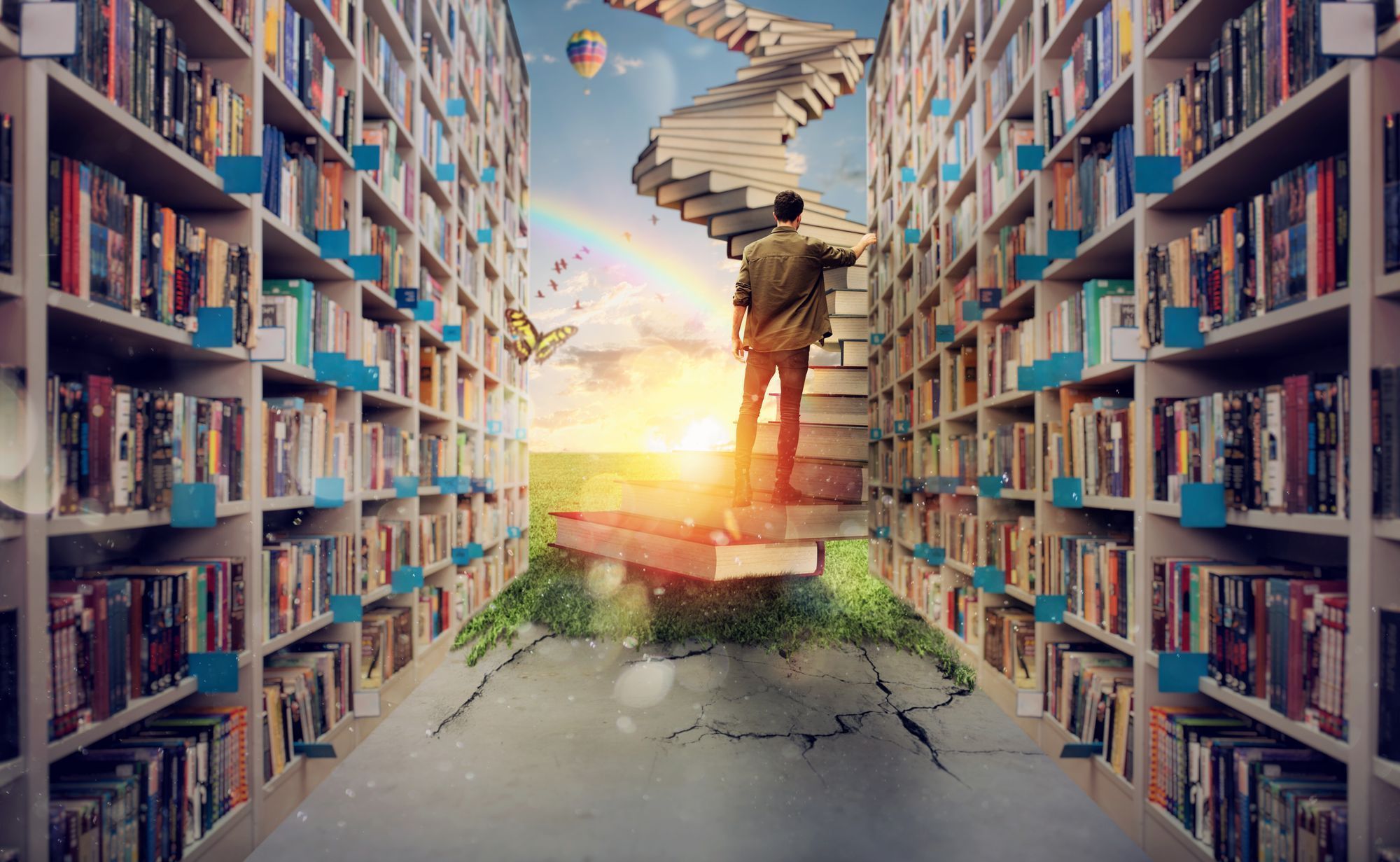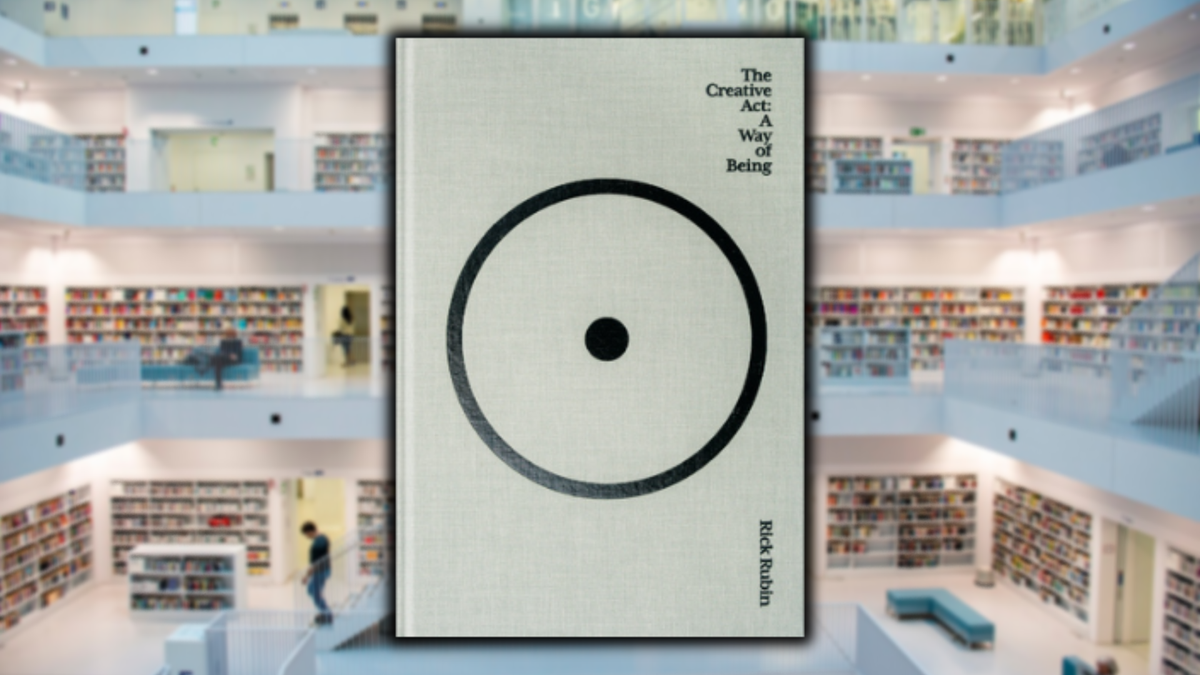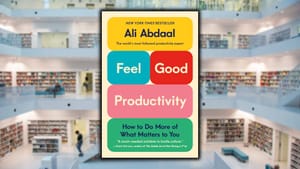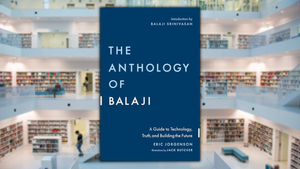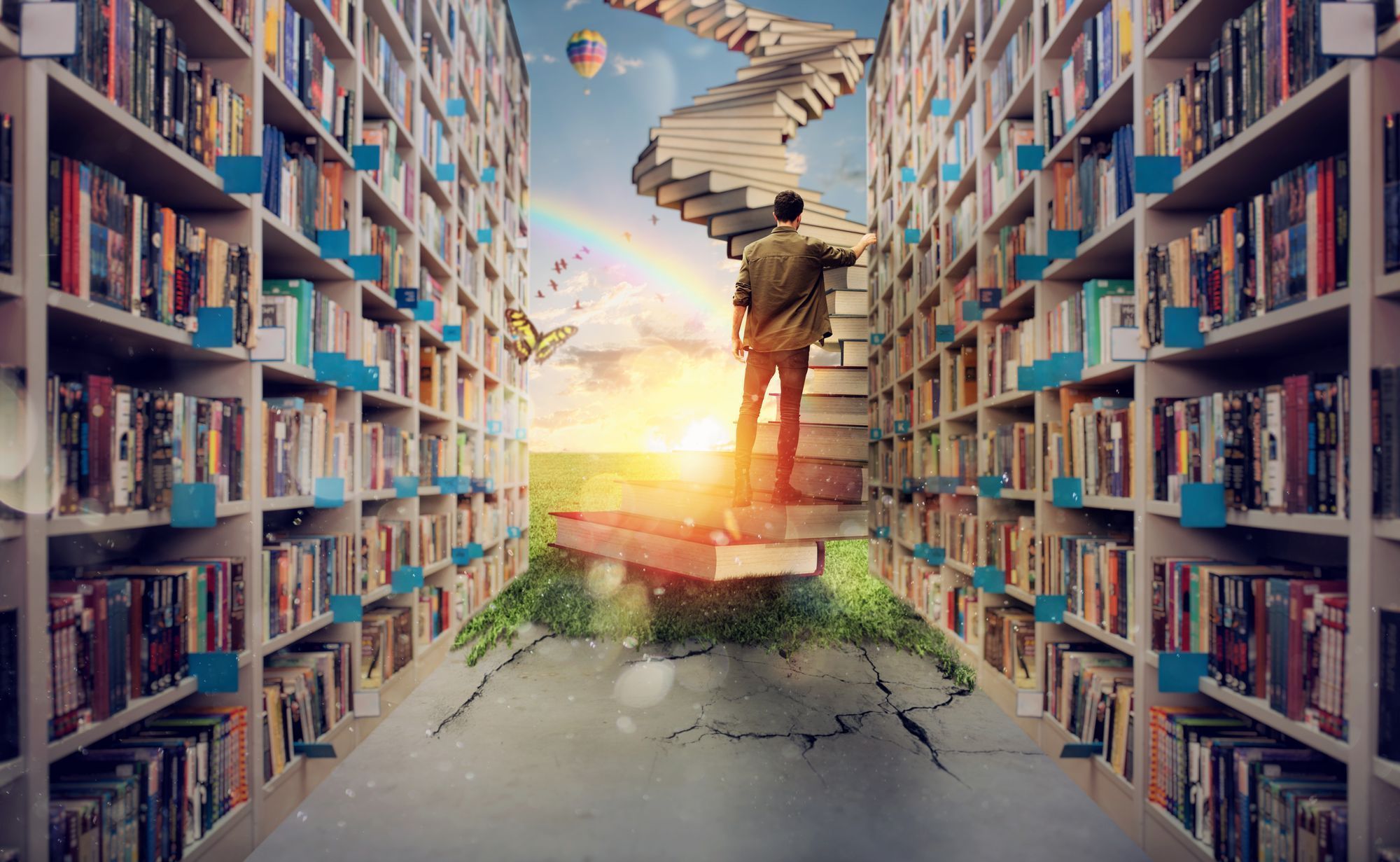
This Book is For:
*Artists and creatives of all kinds, working within whatever medium, who want to be led deeper into the heart of creativity by a legendary music producer who's traveled there innumerable times before.
*Anyone who is stuck artistically, or who has run up against creative roadblocks preventing them from producing and releasing their greatest work, and who wants advice from one of the greats about how to become a finisher.
*Everyone who feels as though there is more to life and creation than what's readily apparent on the surface, and who wants to increase their sensitivity and receptivity to what the wider universe is trying to show us.
*Normal, everyday people who haven't yet begun to express themselves artistically but who nevertheless suspect that they might actually have something meaningful inside themselves to contribute.
Summary:
“To see what no human has seen before, to know what no human has known before, to create as no human has created before, it may be necessary to see as if through eyes that have never seen, know through a mind that has never thought, create with hands that have never been trained."
-Rick Rubin, The Creative Act
Legendary music producer Rick Rubin has probably guided more of your favorite songs into existence than you realize, no matter whether you listen to country, rock, rap, metal, or anything in between.
Ever since co-founding Def Jam Recordings from his college dormitory in the 1980s, he's produced albums for Slayer, Adele, Jay-Z, Neil Young, Johnnie Cash, and a huge number of other artists that have very little in common other than the fact that they all record songs.
As Rubin says in the book, "However you frame yourself as an artist, the frame is too small,” which idea he definitely exemplifies in his own life and creative work. Even The Creative Act itself expanded beyond its frame, because, as he said about his own writing process:
“I set out to write a book about what to do to make a great work of art. Instead, it revealed itself to be a book on how to be.”
The above statement is a big key to understanding the book, to Rubin's creative process in general, and to the nature of life and art itself, because he reveals that living and being are inseparable from the work you end up creating. There is no "work-life balance" for the true artist, and everyone is an artist if only they would learn to see.
Being an artist isn't so much about what kind of art you make, or some particular volume of output, but rather it's about your relationship to the world and how much of it you can pick up through your senses. And how much of what you see you're able to pass on to your audience to help us see it too.
How much of an artist you are is directly dependent on how much awareness you can bring to your direct experience of life. The more aware you are, the more of an artist you are, and everyone can learn how to deepen their perception of their internal and external worlds. We can all be artists.
The Creative Act contains 78 philosophical "musings" on the nature of art and the laws of creativity, although most of those "laws" are more or less made to be broken. Really, the only law that Rubin says is "less breakable" than the others is the need for patience.
He also doesn't name any names in this book, or go into many stories at all about working with any particular artists. Come to think of it, The Creative Act is to creativity what Robert Greene's books are to strategy. It's a book of opposites - versatile, open to a vast number of interpretations and uses - and probably requires at least a few reads to really "get it."
Tactically, inside you'll find a wealth of insights about finding - and being receptive to - ideas, settling on sustainable rituals that will help you achieve longevity in your career, advice about setting limits, advice about exceeding limits, how to discover your own unique voice, and even what it means to express oneself creatively.
In the Key Ideas section below, we'll be discussing what it might be like to pay attention as though you were landing a plane, how to expand the universe, how to anger the audience and incite strong reactions to your work, and more.
Rick Rubin will help us understand why we must become finishers, how we can take our work to its extreme conclusion, and why expressing ourselves is the best - and perhaps only - way to discover who we really are.
The fundamental idea behind much of his advice is that we are all artists, and each of us has something meaningful to contribute to the world, whether we're actively working to make it real or not. That's part of the magic that he often brought to the studio, and that's part of the magic he put into this book.
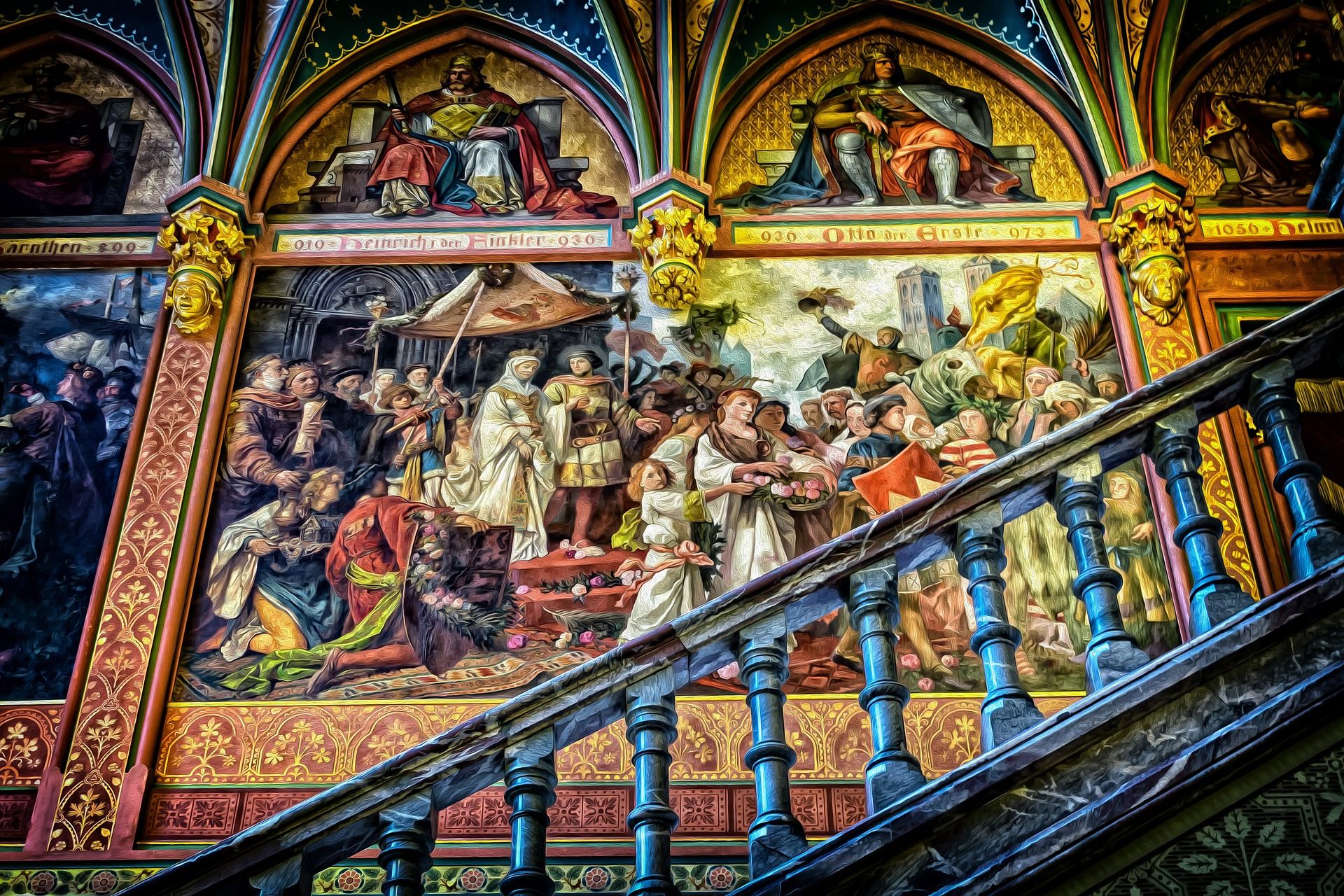
Key Ideas:
#1: The Root of Creativity
“The ability to look deeply is the root of creativity. To see past the ordinary and the mundane and get to what might otherwise be invisible."
Everyone looks, but not everyone sees. When he was just eight years old, the 18th-century visionary poet William Blake was walking by himself to Peckham Rye where he would have the first of many mystical experiences. On subsequent occasions, his mother would wonder why he was walking with his eyes turned upward when she couldn't see anything special there herself.
Blake told her later that it was because she couldn't see the angels in the trees. He would later go on to write the most gorgeous poems, like this one, proof of his exceptional power of seeing, regardless of whether or not you believe in angels:
“If the doors of perception were cleansed every thing would appear to man as it is, Infinite. For man has closed himself up, till he sees all things thro' narrow chinks of his cavern.”
William Blake may be one of those "special cases" of people perhaps genetically predisposed to seeing further (and deeper) than the rest of us, but it's fair to say that none of us, regardless of our genetics ever comes close to tapping our full talent or learning to see perfectly. It isn't something that just "happens" to most of us; it's a skill to be developed, like reading or writing.
Looked at in the proper way, nothing is boring.
In fact, there's a memorable little book by A.J. Jacobs called Thanks a Thousand, where he goes through the process of personally thanking every single person involved in bringing him his morning cup of coffee. As the title implies, he literally lists more than a thousand people by name, from the farmers who grow the beans to the truck drivers who deliver them to the warehouse, the supervisors at the warehouse who keep track of all the shipments, and on and on.
Actually, Michael Pollan wrote an extremely fascinating history of coffee's "takeover" of the entire world, its vast history, and its impact. Coffee! Most people drink thousands of cups of coffee during their lives and never give it another thought. However, as I've come to realize, and as Rick Rubin repeatedly stresses in this book, nothing is boring.
What's more, the ability to see what other people barely notice is the root of all creativity. And it begins even before we first pick up a brush or commit that first word to paper.
We can all "see the angels in the trees," so to speak, if we only develop our own capacity to look. This capacity isn't inborn in most of us, but if you pay attention, you'll see that the seeds of this capacity were there the whole time.
#2: How to Expand the Universe
“We can quiet our inside so we can perceive more on the outside, or quiet the outside so we can notice more of what's happening inside. We can zoom in on something so closely it loses the features that make it what it appears to be, or zoom so far out it seems like something entirely new.
The universe is only as large as our perception of it. When we cultivate our awareness, we are expanding the universe. This expands the scope, not just of the material at our disposal to create from, but of the life we get to live."
When you change the way you look at things, the things you look at change. In a very real way, because of a feature of the human brain called the reticular activating system, or RAS, we literally see what we're looking for.
The most common example people use to describe how this works is when immediately after checking out a new type of car to buy, you generally start seeing that same type of car everywhere. Suddenly, everyone drives a Mustang or a Prius because you've been primed to look for that type of car due to recent events in your life - i.e., looking at buying that particular brand of car.
The limits of our vision are the limits of the universe, and so when we expand our vision we also expand the limits of the universe. At least, the limits of our universe as it appears to us, which is really the only way you'll ever experience the universe. You'll literally never experience anything outside of your own subjectivity.
So, again, in a very real way, the universe has expanded, because it has expanded for you.
We're usually blind to this because we're so used to seeing the world through our original perspective. We're used to ourselves, so we never see ourselves clearly. As they say, there are three great mysteries in the universe: air to the bird, water to the fish, and man to himself.
However, we can disrupt and challenge our own perceptions at will, thereby changing the way we look at things, which results in us having more material available with which to create art.
Importantly, though, this changed perception is always the result of a conscious, concerted effort to see things differently. Awareness is always intentional, and so, as an artist, you have to go out of your way sometimes to change your perspective and change the things you're looking at.
The "real world" will always exist externally to you, but you don't have to simply accept it for what it is. You stand at the controls, always able to zoom in or out, to get underneath the words, between the notes, and beside the work. The real, unchanging world will always exist, but you don't have to live there.
#3: Land the Plane
“The artist actively works to experience life slowly, and then to re-experience the same thing anew. To read slowly, and to read and read again.
I might read a paragraph that inspires a thought, and while my eyes continue moving across the page in the physical act of reading, my mind may still be lost in the previous idea. I'm not taking in information anymore.
When I realize this, I return to the last paragraph I can recall and start reading from there again. Sometimes it's three or four pages back. Re-reading even a well-understood paragraph or page can be revelatory. New meanings, deeper understandings, inspirations, and nuances arise and come into focus.
Reading, in addition to listening, eating, and most physical activities, can be experienced like driving: we can participate either on autopilot or with focused intention.
So often we sleepwalk through our lives. Consider how different your experience of the world might be if you engaged in every activity with the attention you might give to landing a plane."
#4: Awareness Needs Constant Refreshing
“At noon, the sun is high in the sky, regardless of how light or dark it is outside. In the same way, regardless of how much we're paying attention, the information we seek is out there.
If we're aware, we get to tune in to more of it. If we're less aware, we miss it. When we miss it, it really does pass us by. Tomorrow presents another opportunity for awareness, but it's never an opportunity for the same awareness."
In an infinite, limitless universe such as ours, everything that we need is already out there. And inside of us, but that's a topic for another day!
From the people you meet to the collaborators you need to partner with, to the skills you need to develop and the opportunities that can change everything for you, all of it is already out there in the world, and so what you need to do is get out there and find it.
You can't just sit at home and expect these things to fall into your lap. As they say, doors of opportunity will open for you, but at the same time, you need to be moving down the hallway.
Of course, you could drive yourself mad stressing about all the opportunities and chance meetings that you're missing every single moment you're alive, but it only takes one to change everything for you.
The reality is that we're always creating our future with every move we make. We're always moving into the adjacent possible, opening up new pathways because of what we've done in the previous moment. You miss a flight, have to board the next one, and you meet the man of your dreams. You don't get the job, and then an old boss calls you out of the blue and asks you to join his hot new company that's about to take off...
You can think of any number of other examples yourself, but the point is that these opportunities already exist for the people who are aware enough to spot them.
You will never run out of opportunities and you will always get another chance, but unless you're constantly aware, you might miss this chance, and unfortunately, you'll then lose it forever. You miss 100% of the opportunities you don't see.
The problem that most people run into is that they let their awareness atrophy. They get used to being aware, which causes them to stop being aware. Awareness is only awareness if it's renewed every moment, and so, as Rick Rubin says:
“Awareness needs constant refreshing. If it becomes a habit, even a good habit, it will need to be reinvented again and again. Until one day, you notice that you are always in the practice of awareness, at all times, in all places, living your life in a state of constant openness to receiving."
#5: Amplify the Differences
“Rules direct us to average behaviors. If we're aiming to create works that are exceptional, most rules don't apply. Average is nothing to aspire to. The goal is not to fit in. If anything, it's to amplify the differences, what doesn't fit, the special characteristics unique to how you see the world."
Arguing against what Rubin says in the quote above, rules give us a basic structure within which we can exercise our freedom.
The "rule" of having to use the 26 characters in the English language gives you the freedom to combine those characters in any way you choose in order to create meaning. Assuming, of course, that you're not James Joyce and you're forming, you know, actual words!
That being said, restricting yourself to those rules will never lead to the creation of great art. If you spend your entire artistic career following the rules, you might have people say things like, "He was a competent painter." Or maybe, "She was a decent architect." But you'll never take anyone's breath away.
The rules are here to enforce conformity, but you are here to express your own individual uniqueness. Rules can be useful, but they're nothing to live your whole life by.
#6: Divide the Audience
“The best art divides the audience. If everyone likes it, you probably haven’t gone far enough.”
The Cadillac Ranch is a public art installation in Amarillo, Texas, that consists of 10 Cadillac cars buried nose-first into the ground. Christo and Jeanne-Claude once wrapped the Reichstag in plastic and set up 3,100 umbrellas across Japan and California. Christo also once barricaded a narrow Paris street with a bunch of oil containers and called the resulting traffic jam his work of art.
Would the Paris motorists trying to get to work that morning have viewed that as "great art"? Most likely not! Even parents in the 1700s probably tried to get their teenagers to stop listening to Mozart. The best art divides the audience. It isn't for everybody.
Whatever you create, no matter how wonderful and marvelous and innovative it may be, a rather large number of people are probably going to end up hating it. But that's actually wonderful news!
It means that you've defied the rules, pushed the boundaries of what's expected or currently demanded, and broken new, dangerous ground. It means that your art is unsafe, and that's perfect because safety never produces great art.
Art is supposed to make people feel something. It's supposed to shake people up, comfort the disturbed and disturb the comfortable, as they say.
Obviously, just because lots of people hate it doesn't mean that it's necessarily "Great Art," but something that's transgressive, different, and real has a much greater chance of standing the test of time.
The other option, of course, is to say nothing, do nothing, and be nothing. Aristotle said that that's a great way to avoid being criticized, and he's right. But staying safe and silent is not how art gets made.
#7: How Can It Be Better?
“Being an artist means to be continually asking, 'How can it be better?' whatever it is. It may be your art, and it may be your life."
I am of the opinion that it's possible simultaneously to be happy but not satisfied. Satisfaction is the dream killer; it's the end of the line, the point at which you've stopped growing, stopped breaking rules, stopped moving the work - and the world - forward.
It is important to publish the work. If you're perpetually unsatisfied with the same piece of art, and for that reason never release it, you're not really an artist. Artists create. Creative people ship. You have to release the current piece before you can get to work releasing the next one, which you'll likely be able to make even better than this one.
You can be happy enough with your current project - happy enough to ship it, at least - but still be unsatisfied with your current level of artistic ability. In that case, on to the next one!
In reference to the quote above, questions are so powerful. The quality of your life is partly determined by the quality of your questions, and this particular question, "How can it be better?" is a damn near perfect question to ask at virtually every stage of your work, and indeed your life.
Some other powerful questions include:
"How could I complete this project in half the time?"
"What would this look like if it were easy?"
"What would someone more confident than me do in this situation?"
"What would I do now if I weren't afraid?"
"What would I do now if I knew I couldn't fail?"
These are all excellent questions to ask, and their explicit purpose is to get you to follow them to their logical conclusion and to take meaningful action. That's how you move your life and your art forward. By asking the question and daring to follow through on the answer.
#8: When Flowing, Keep Going
“If you are fortunate enough to experience the strike of inspiration, take full advantage of the access. Remain in the energy of this rarefied moment for as long as it lasts. When flowing, keep going."
There's an excellent book that changed my productive life and it's called Deep Work, by Cal Newport. Now, deep work, as opposed to shallow work, is usually done in dedicated blocks of time where you shut off all distractions, close the blinds, turn on airplane mode, and don't re-emerge until you've completed the main task at hand.
Many of these book breakdowns were written during deep work sessions, and as well as "batch creating" my work, this is one of the things that allows me to be rather prolific, if I do say so myself! I produce a lot of work, and it doesn't happen by accident.
I like to have a clear structure in place to guide my work efforts, but, as per the quote above, I also give myself the freedom to call an audible and make a different play, should I find myself struck by inspiration at the very moment when it would otherwise be time to shut down for the day. When I'm flowing, I keep going.
An example of this is one of the first oratorical contests I've ever entered, at which I won $500 as the first-place winner. I was in high school at the time and it was one of my first times ever speaking in public, but what happened was actually kind of astonishing...
Just a few days before I was supposed to give my speech, I had been feeling totally blocked. I still didn't have anything fully prepared, and I was even thinking about dropping out of the contest entirely. But, one night, I remember being just about to drift off to sleep when suddenly, everything came to me.
My whole speech essentially appeared to me in the corner of my mind and even though I was "supposed" to go to sleep, I immediately got up, went downstairs to my computer, and outlined my whole speech in about an hour.
The next day, I looked at what I had written the night before and knew that I was onto something big. So I filled in the outline that I had prepared the previous night, added a few touches here and there, made some corrections, and recommitted to speaking at the contest. Afterward, $500 later, here we are!
I didn't have to write the whole outline in one night. I didn't even have to get out of bed! But I knew that if I didn't capture what I had seen in that corner of my mind, it would be lost forever, along with any hope I had of winning the contest.
Sometimes, you just have to double down on inspiration and see it through to the end, no matter what. You never know when or if it will come again - just like life - and so you have to capture it NOW.
#9: Do Great Work
“With the objective of simply doing great work, a ripple effect occurs. A bar is set for everything you do, which may not only lift your work to new heights, but raise the very vibration of your entire life. It may even inspire others to do their best work. Greatness begets greatness. It's infectious."
The only intention you'll ever need to set for yourself is the intention to do great work. That's it. That's one of the only things you can influence, not public perception or the favor of the audience.
In the same way that when you try to hit a home run you end up striking out, or when you're overly conscious of performing the perfect dance moves you end up collapsing gracelessly to the floor, when you try to create something that will be adored by the audience, your efforts may tend to fall short. It's only when you focus on the doing that your art becomes greater than you and raises the very vibration of your entire life, as Rubin says above.
The legendary basketball coach John Wooden believed the same thing, which he molded into his philosophy of competitive greatness. The philosophy of Stoicism is all about what you can control, which is simply your own efforts, thoughts, and attitudes. There are countless examples.
This intention is where you can exercise your greatest leverage, and where your actions will do the most good. You focus on what you can control, which is your intention to do great work, and leave the results to take care of themselves.
#10: Complete the Work
“Art may only exist, and the artist may only evolve, by completing the work.”
There aren't too many "formulas" that Rick Rubin lays out in this book, but he does speak quite a bit about completing the work, about becoming a finisher. Shipping, in other words.
To bring any piece of art into the world, you have to move it through four distinct phases, each of which requires something different from the artist:
*Collecting Seeds: This is where you gather the ideas and inputs that will inform the work. Collecting as many of them as you can, you expand your awareness, letting inspiration find you, and allowing the universe to provide you with the initial sparks of creation.
What's important here is not to judge the ideas you receive, simply to gather them, reflect on them, and allow them to become what they want to be.
*Experimentation: This is where you play around with these ideas, perhaps sorting them into the ones that have potential, the ones you might use later, and the ones you see a place for immediately.
This is not where you perform any editing of these ideas. Your level of excitement can be an indication of which ideas you might like to pursue, but now is not necessarily the time to fashion them into any kind of coherent shape or form.
*Crafting: You've gathered the ideas, you've experimented freely and openly, and you now have a clearer vision of where these ideas can take you. Now it's time to get to work.
At this stage, you're still open to receiving additional ideas that could inform the current work, but now you're hammering, chiseling, shaping, and molding the raw material into something approximating a finished product.
*Completion: You knew this day would come! This is the final phase of your work, and it's where most people stumble. They're just not finishers, they're not closers. Art is for closers! You have to ship!
You have to finish and release what you've spent so much time and care crafting up until this point, and this is often where you'll spend 50% of the total time it will take to complete the entire project.
A firm deadline can help here, some specific release date - maybe backed up with some public accountability - when your audience is expecting you to deliver.
#11: Discover Who You Are by Expressing Who You Are
“Expressing oneself in the world and creativity are the same. It may not be possible to know who you are without somehow expressing it."
One of the purposes of writing is to understand what you think. When you start committing your thoughts to paper, oftentimes you'll have the experience of dredging up thoughts and beliefs you didn't even know you had, and this is the same with any artistic medium.
These thoughts, beliefs, and everything else that's in there need to be expressed, or else a very real part of you will die. It's simply not possible to know what you think, what you believe, and what you can achieve, without first beginning to move it from the inside to the outside. As they say, we make the path by walking. More will be revealed to us, but we need to be moving.
Moreover, it's not an exaggeration to say that what you can be you must be, or else it's likely that you'll be unhappy for the rest of your life. Express who you are to discover who you are.
It's important, and it's intentional. Self-discovery is never an accident, but too many people today just live "accidentally."
Most people have no idea who they are. Even the ones who always seem to want to tell you who they are don't really know themselves! They're just going by what they've been told, and that's never the whole story. Because, tragically, what Carl Jung has said is completely true:
"The world will ask you who you are. And if you don't know, the world will tell you."
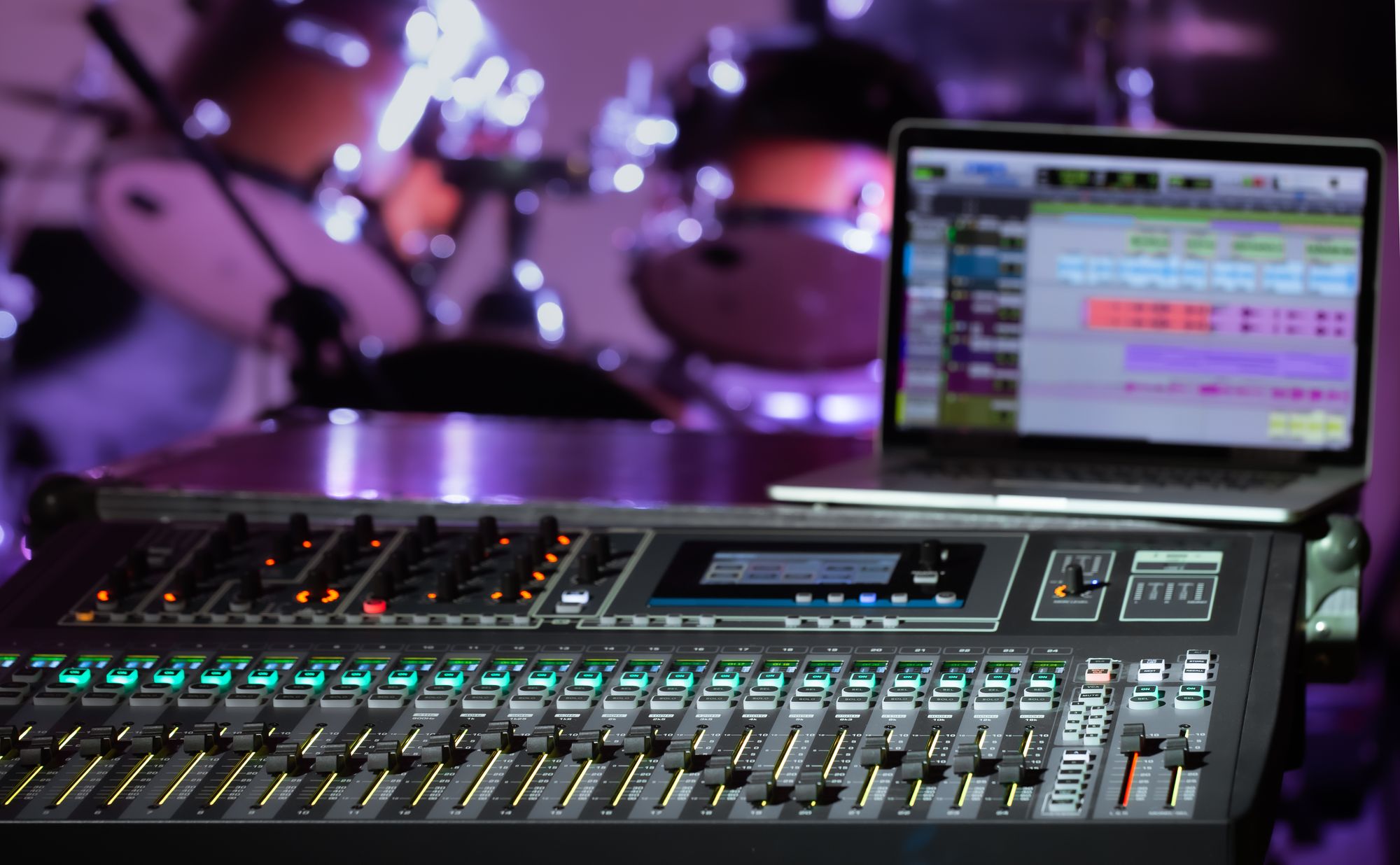
Book Notes:
"The object isn't to make art, it's to be in that wonderful state which makes art inevitable."
-Robert Henri
“We begin with everything: everything seen, everything done, everything thought, everything felt, everything imagined, everything forgotten, and everything that rests unspoken and unthought within us."
“It may be helpful to think of Source as a cloud. Clouds never truly disappear. They change form. They turn into rain and become part of the ocean, and then evaporate and return to being clouds. The same is true of art. Art is a circulation of energetic ideas. What makes them appear new is that they're combining differently each time they come back. No two clouds are the same."
“Through you, the universe that surrounds us all comes into focus.”
“The practice of spirituality is a way of looking at a world where you're not alone. There are deeper meanings behind the surface. The energy around you can be harnessed to elevate your work. You are part of something much larger than can be explained - a world of immense possibilities."
“If a piece of work, a fragment of consciousness, or an element of nature is somehow allowing us to access something bigger, that is its spiritual component made manifest. It awards us a glimpse of the unseen."
“You might imagine that the outside world is a conveyor belt with a stream of small packages on it, always going by. The first step is to notice the conveyor belt is there. And then, any time you want, you can pick up one of those packages, unwrap it, and see what's inside."
“When clues present themselves, it can sometimes feel like the delicate mechanism of a clock at work. As if the universe is nudging you with little reminders that it's on your side and wants to provide everything you need to complete your mission."
“Look for what you notice but no one else sees.”
“Broadening our practice of awareness is a choice we can make at any moment. It is not a search, though it is stoked by a curiosity or hunger. A hunger to see beautiful things, hear beautiful sounds, feel deeper sensations. To learn, and to be fascinated and surprised on a continual basis."
“There is never a shortage of awe and inspiration to be found outdoors. If we dedicated our lives solely to noticing changes in natural light and shadow as the hours pass, we would constantly discover something new."
“The closer we can get to the natural world, the sooner we start to realize we are not separate. And that when we create, we are not just expressing our unique individuality, but our seamless connection to an infinite oneness."
“No two gusts of wind feel quite the same. The tone and quality of sunlight changes from minute to minute and day to day.”
“No one is the same person all day long.”
“The person who makes something today isn’t the same person who returns to the work tomorrow.”
“Our inner world is every bit as interesting, beautiful, and surprising as nature itself. It is, after all, born of nature. When we go inside, we are processing what's going on outside. We're no longer separate. We are connected. We are one."
“It helps to realize that it's better to follow the universe than those around you."
“We’re not playing win, we're playing to play. And ultimately, playing is fun. Perfectionism gets in the way of fun. A more skillful goal might be to find comfort in the process. To make and put out successive works with ease."
“Some things are too important to be taken seriously.”
-Oscar Wilde
“At times, physical movement can spur ideas to move too.”
“Most creators think of themselves as the conductor of the orchestra. If we zoom out of our small view of reality, we function more as an instrumentalist in a much larger symphony the universe is orchestrating. We may not have a great understanding of what this magnum opus is because we only see the small part we play."
"Art is confrontation. It widens the audience's reality, allowing them to glimpse life through a different window. One with the potential for a glorious new view."
“Similar conventions are woven into most art forms: a book is a certain number of pages and is divided into chapters. A feature film is 90 to 120 minutes and often has three acts. Embedded in each medium, there are sets of norms that restrain our work before we've even begun."
"The world isn't waiting for more of the same. Often, the most innovative ideas come from those who master the rules to such a degree that they can see past them or from those who never learned them at all."
“Rules obeyed unconsciously are far stronger than the ones set on purpose. And they are more likely to undermine the work."
“For every rule followed, examine the possibility that the opposite might be similarly interesting. Not necessarily better, just different. In the same way, you can try the opposite or the extreme of what's suggested in these pages and it will likely be just as fruitful."
“When listening, there is only now.”
“Impatience is an argument with reality. The desire for something to be different from what we are experiencing in the here and now."
“If there is a rule to creativity that's less breakable than the others, it's that the need for patience is ever-present."
“To see what no human has seen before, to know what no human has known before, to create as no human has created before, it may be necessary to see as if through eyes that have never seen, know through a mind that has never thought, create with hands that have never been trained."
“Most of what we see in the world holds the potential to inspire astonishment if looked at from a less jaded perspective. Train yourself to see the awe behind the obvious. Look at the world from this vantage point as often as possible. Submerge yourself."
“When an idea forms, or a hook is written, we may feel that we've cracked the code and the rest will take care of itself. If we step away and let that initial spark fade, we may return to find it's not so easy to rekindle. Think of inspiration as a force not immune to the laws of entropy."
“Discipline and freedom seem like opposites. In reality, they are partners. Discipline is not a lack of freedom, it is a harmonious relationship with time. Managing your schedule and daily habits well is a necessary component to free up the practical and creative capacity to make great art."
“Put the decision-making into the work, not into when to work. The more you reduce your daily life-maintenance tasks, the greater the bandwidth available for creative decisions. Albert Einstein wore the same thing daily: a gray suit. Erik Satie had seven identical outfits, one for each day of the week. Limit your practical choices to free your creative imagination."
“Limit your practical choices to free your creative imagination.”
“Base decisions on the internal feeling of being moved and notice what holds your interest. This will always be in the greatest service of the work."
“Taking a wrong turn allows you to see landscapes you wouldn’t otherwise have seen.”
“The personal is the universal.”
-Carl Rogers
“Whatever our perspective, so long as we share it, unaltered and undoctored, we succeed in art's fundamental purpose. When making art, we create a mirror in which someone may see their own hidden reflection."
“Great art is created through freedom of self-expression and received with freedom of individual interpretation. Great art opens a conversation rather than closing it. And often this conversation is started by accident."
“Hanging on to your work is like spending years writing the same entry in a diary. Moments and opportunities are lost. The next works are robbed of being brought to life."
“It’s grounding to protect your personal understanding of success. And to make each new work, no matter where you stand on the ladder of public perception, like you have nothing to lose."
“Consider detaching from the story of your life as it's happening. The manuscript of the novel you've worked on for years is lost in a fire. Your romantice relationship breaks up when you thought it was going well. You lose a job you care about.
As hard as it may seem, seek to experience events like these as if you're watching a movie. You're observing a dramatic scene where the protagonist faces a seemingly insurmountable challenge. It's you, but it's not you.
Instead of sinking into the pain of heartbreak or the stress of being laid off or the grief of loss, if practicing detachment the response might be: 'I wasn't expecting that plot twist. I wonder what's going to happen to our hero next.'
There's always a next scene, and that next scene may be one of great beauty and fulfillment. The hard times were the required setup to allow these new possibilites to come into being. The outcome is not the outcome. The darkness is not an end point, nor is the daylight. They live in a continually unfolding, mutually dependent cycle. Neither is bad or good. They simply exist.
This practice - of never assuming an experience you have is the whole story - will support you in a life of open possibility and equanimity. When we obsessively focus on these events, they may appear catastrophic. But they're just a small aspect of a larger life, and the further you zoom back, the smaller each experience becomes. Zoom in and obsess. Zoom out and observe. We get to choose.
When we reach an impasse, we may experience feelings of hopelessness. The ability to stay out of the story, zoom back, and see new pathways into and around a challenge will be of boundless use.
If we allow this principle to work on us as we work on it, our imagination frees us from the web of personal and cultural stories engulfing us. Art has the power to snap us out of our transfixion, open our minds to what's possible, and reconnect with the eternal energy that moves through all things."
“Wanting to outperform another artist or make a work better than theirs rarely results in true greatness. Nor is it a mindset that has a healthy impact on the rest of our lives."
“As artists, we are on a continual quest to get closer to the universe by getting closer to self. Moving ever nearer to the point where we can no longer tell where one begins and the other ends. We're on a distant metaphysical journey from the here to the now."
“Making great art may not always require great effort, but without it, you’ll never know.”
“Every work contains a lifetime of experience.”
“The world is only as free as it allows its artists to be.”
“Avoid getting stuck with a decision you made five minutes ago.”
“The goal is to get the work to the point that when you see it, you know it couldn't have been arranged any other way. There's a sense of balance. Of elegance."
“Each of us has our own way of seeing this world. And this can lead to feelings of isolation. Art has an ability to connect us beyond the limitations of language. Through this, we get to face our inner world outward, remove the boundaries of separation, and participate in the great remembering of what we came into this life knowing: There is no separation. We are one."
“When we are unable to recognize the harmony in the universe around us, it's probably because we're not taking in enough data. If we zoom out or zoom in far enough, the integrated nature of all there is becomes clear.
Just as each small stroke on a canvas can't step aside to see the whole painting, we're unable to take in the great whole of relationships and counterbalance that surrounds us in all directions.
Our inability to comprehend the inner workings of the universe may actually bring us more in tune with its infinitude. The magic is not in the analyzing or the understanding. The magic lives in the wonder of what we do not know."
“However you frame yourself as an artist, the frame is too small.”
“Even in perceived chaos, there is order and pattern. A cosmic undercurrent running through all things, which no story is immense enough to contain."
“The universe never explains why.”

Important Insights from Related Books:
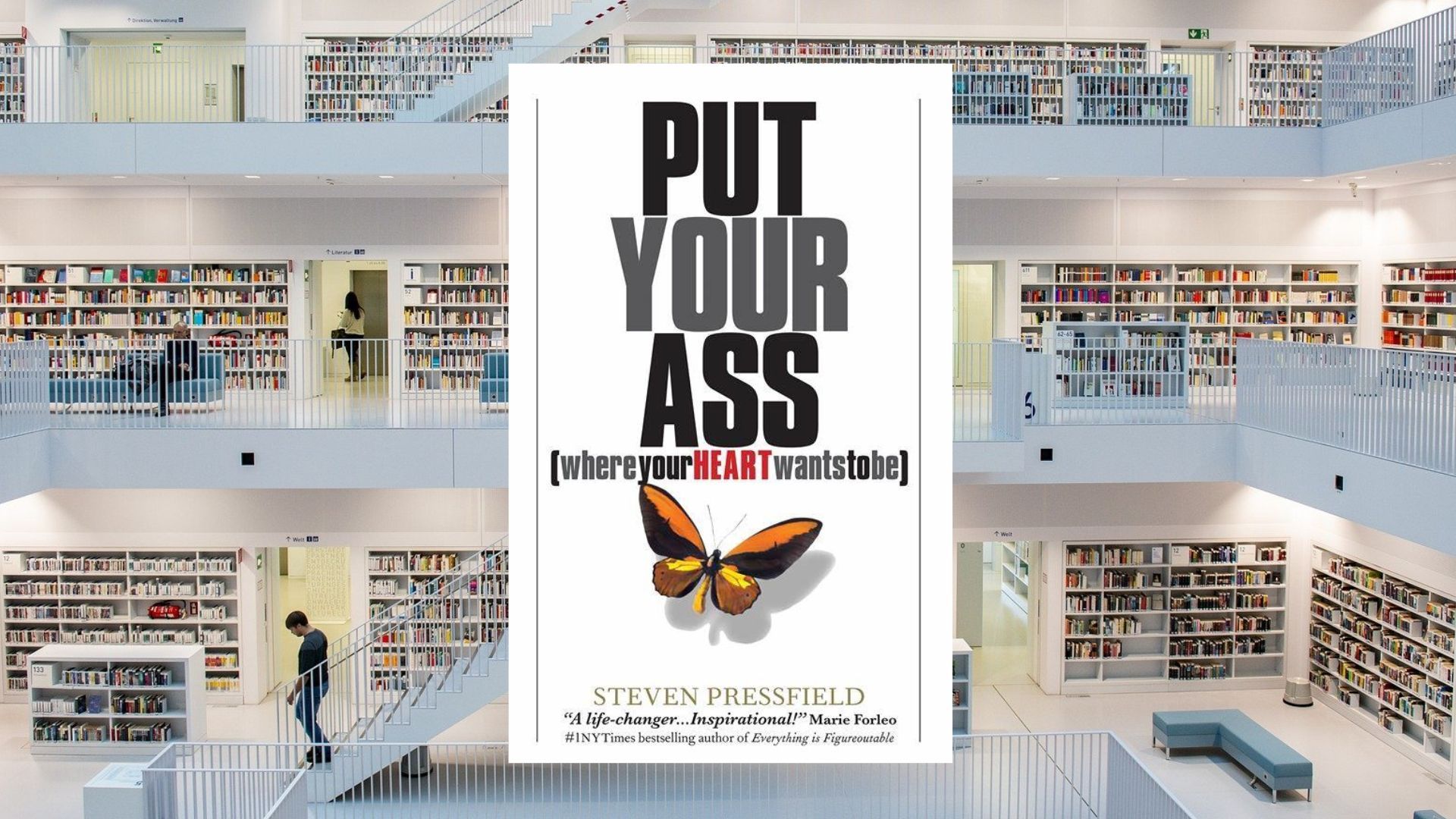
Put Your Ass Where Your Heart Wants to Be, by Steven Pressfield:
“When we say, ‘Put your ass where your heart wants to be,’ we mean station your physical body in the spot where your dream-work will and must happen. Want to write? Sit down at the keyboard. Wanna paint? Step up before the easel. Dance? Get your butt into the rehearsal studio. Dumb and obvious as it sounds, tremendous power lies in this simple physical action.”
-Steven Pressfield, Put Your Ass Where Your Heart Wants to Be
Steven Pressfield is essentially the patron saint of artists and creatives everywhere, and this book is a wonderful exhortation toward greater commitment to one’s chosen craft, and a call to go “all-in” on your creative endeavors.
Pressfield just gets it; he’s been there, and after one hell of his own hero’s journey, he’s returned to show us how to “make it” as well. If you're still stuck in the depths of fear, self-doubt, procrastination, and perfectionism, however, then this book could really help you.
At the core level, it’s a book about giving up everything for a dream, and about why doing something “crazy” like that can make life worth living, at least for a certain type of person. You might be that type of person, and if you are, you’re going to feel seen while reading this book as well.
Throughout the book, he blends the practical and the metaphysical in a way that’s just…awesome…and if you believe that you have something great inside of you but aren’t sure how to access it, then you need to read this book.
Sample Quotes from the Book:
“Leave the town or city where you live and move to the hub of the creative or entrepreneurial world where your dreams are most likely to come true. Let me repeat that. Pack up your total establishment – spouse, kids, dog, couch, treadmill – and move to the metropolis that’s the epicenter of your career or creative dream.
Yes, I know we can all work remotely. Zoom will put our faces before potential friends, mentors, and collaborators without us leaving the comfort of our homes. But it ain’t the same as being there. Someone may ask, ‘I want to work in country music. Do I have to move to Nashville?’ Or ‘My dream is to act in movies. Do I have to pack up for LA?’ Yes and yes.”
“You too have a body of work. It exists inside you, on the Plane of Potentiality. Are you a writer? This body of work exists, like books on a bookshelf. Close your eyes. You can see them.
Are you a musician? These works exist like albums, like concerts, like performances. Listen with your inner ear. You can hear them.
These bodies of work exist as alternative futures. They are that which can be…and should be…and want to be. But they are not that which is guaranteed to be.”
“Can we put our ass where our heart wants to be if we’ve got a family, a job, a mortgage? Yes. The Muse does not count hours. She counts commitment. It is possible to be one hundred percent committed ten percent of the time. The goddess understands.”
Read the Full Breakdown: Put Your Ass Where Your Heart Wants to Be, by Steven Pressfield
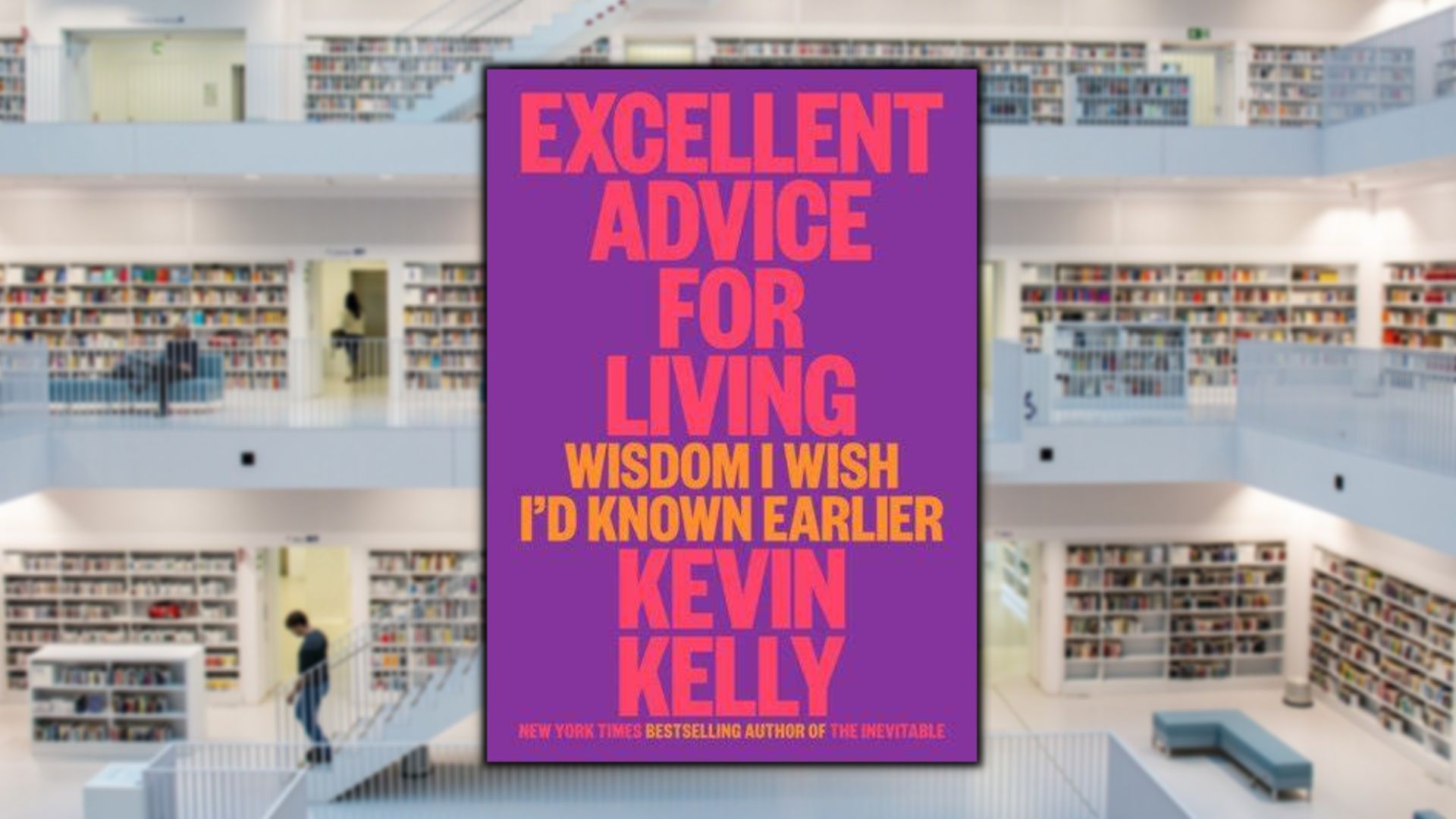
Excellent Advice for Living, by Kevin Kelly:
"On my sixty-eighth birthday, I decided to give my young adult children some advice. I am not a frequent advice giver but soon I was able to write down 68 bits. To my surprise, I had more to say than I thought.
So for the next several years I wrote down a batch of advice on my birthday and shared it with my family and friends. They wanted more. I kept going until I had about 450 bits of advice I wished I'd known when I was younger.
I am primarily channeling the wisdom of the ages. I am offering advice I have heard from others, or timeless knowledge repeated from the past, or a modern aphorism that matched my own experience. I doubted any of it is truly original, although I have tried to put everything in my own words.
I think of these bits as seeds because each one of them could easily be expanded into a long essay. Indeed, I have spent most of my time writing by compressing these substantial lessons into as compact and tweetable forms as possible. You are encouraged to expand these seeds as you read to fill your own situation.
If you find these proverbs align with your experience, share them with someone younger than yourself."
-Kevin Kelly
Just because you're old doesn't mean that you automatically have much valuable wisdom to share. Some people haven't really lived 10,000 days, they've just lived the same day 10,000 times. Kevin Kelly, however, is an exception, and it turns out that the brilliant and insightful tech innovator gives excellent life advice.
For anyone hearing about Kelly for the first time, he is the co-founder of Wired magazine and a highly-praised futurist and author whose optimistic outlook on the next chapter of human history has inspired a generation to think bigger and to advance confidently into the next stage of human evolution.
As Kelly says in the quote that began this summary, the life advice presented in this book was originally intended for his young adult children to help them navigate the hazardous future we all find ourselves hurtling towards. But the very act of writing them down caused him to realize that he had much more to offer than he thought he did when he began, which resulted in him eventually compiling this wonderful collection of 450 wise, practical, and incredibly valuable aphorisms.
The range of subjects they cover is as wide and deep as life itself, and so you'll find here advice about setting ambitious goals, cultivating peace of mind and equanimity, dealing with loss, organizing your life around adventure and spontaneity, dispelling anger and sadness, minimizing regret, and so much more.
Now, in a book with hundreds and hundreds of wise, practical aphorisms, my choices about which ones to expand on and which ones to ignore likely say more about me than they do about whether they're the "best" aphorisms or the "most useful" ones.
As you read the book and filter this life advice through your particular worldview, situation, and understanding, you're probably going to disagree with at least a few of them, or find them irrelevant or silly, etc. But which ones those are will change depending on who you are. That's part of what makes books so magical!
That being said, if it's true that your quality of life is roughly equal to the quality of the 20-30 people who give you the best advice, then you'd be wise to include Kevin Kelly in that group.
Sample Quotes from the Book:
“Over the long term, the future is decided by optimists. To be an optimist, you don't have to ignore the multitude of problems we create; you just have to imagine how much our ability to solve problems improves."
“We tend to overestimate what we can do in a day, and underestimate what we can achieve in a decade. Miraculous things can be accomplished if you give it 10 years. A long game will compound small gains that will be able to overcome even big mistakes."
“When you feel like quitting, just do five more: 5 more minutes, 5 more pages, 5 more steps. Then repeat. Sometimes, you can break through and keep going, but even if you can't, you ended five ahead. Tell yourself that you will quit tomorrow, but not today."
Read the Full Breakdown: Excellent Advice for Living, by Kevin Kelly
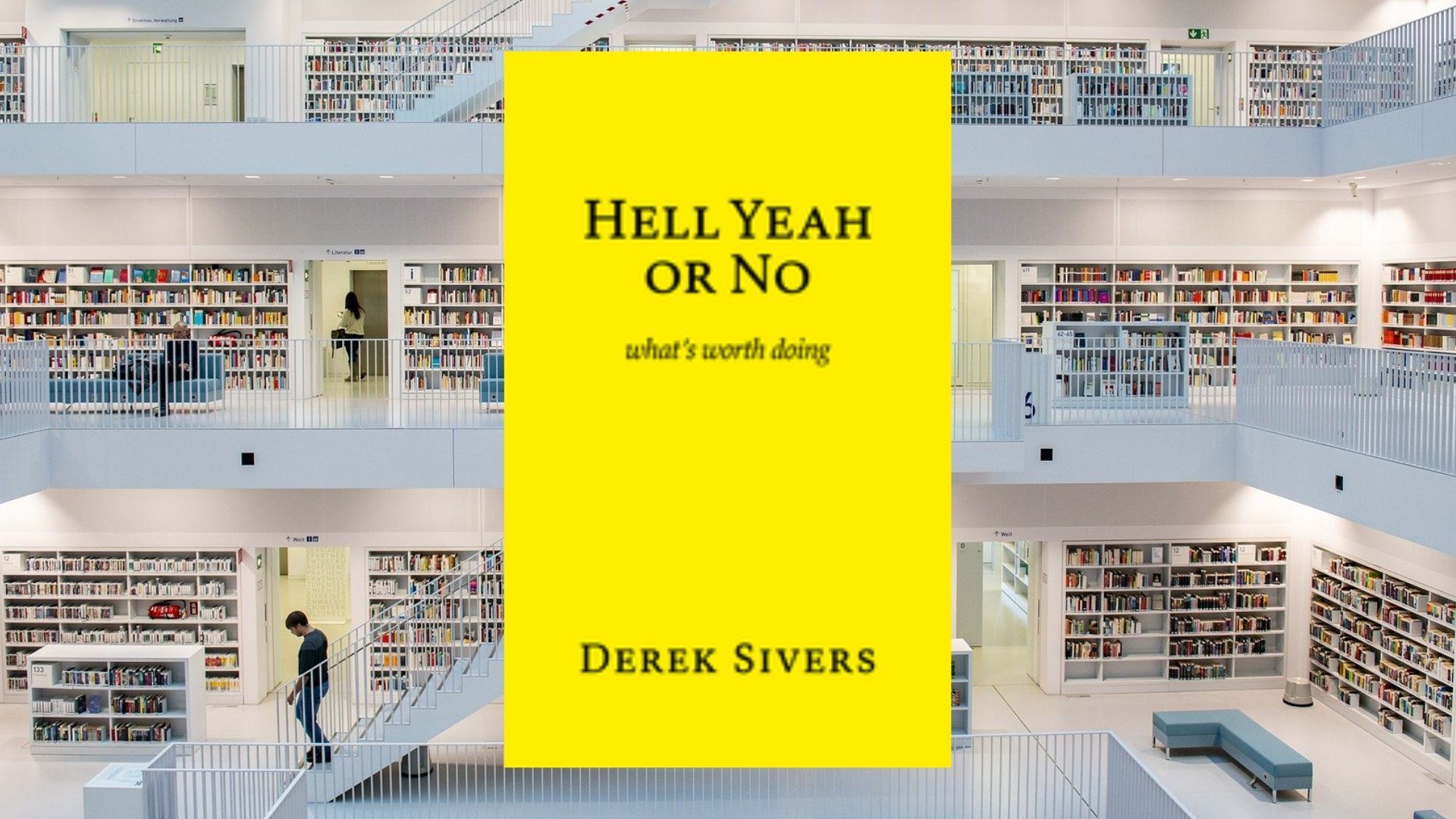
Hell Yeah or No: What's Worth Doing, by Derek Sivers:
"When life or a plan feels ultimately unsatisfying, I find it's because I've forgotten to find the intersection of all three: what makes me happy, what's smart, and what's useful to others."
-Derek Sivers, Hell Yeah or No
Certain authors just become associated with particular ideas over time, and one that I continue to profit from handsomely – year after year after year – is Derek Sivers’ insight that when making a decision, it’s either a “Hell yeah!” or it’s a “No.”
Either you’re consumed with interest by what you’ve decided to do - it’s just so completely obvious that this is the thing you should be doing/want to do - or you’re better off not doing it at all.
Hell Yeah or No is a fairly quick read, full of exceptionally useful frameworks for thinking, and I ended up with dozens of book notes and brilliant ideas to think about later. The interesting thing, though, is that many of Sivers' conclusions contradict each other!
Derek is a special thinker in that way. He can calmly and wisely approach big, intimidating questions, and he can disagree with himself multiple times (sometimes even in the same essay), all while getting closer and closer to a tentative answer that he then rigorously tests in the lab of his own life.
He's no armchair philosopher either! I'd even say that he's one of the most interesting people alive today. The dude sold his company, CD Baby, for millions of dollars, enabling him to forget about earning more money (he doesn’t need it or want it), and letting him put every single creative neuron in his brain into his creative work and, you know, living his actual life. And what a life!
In the past, he’s been a musician, a producer, a circus performer, an entrepreneur, a TED speaker, and a book publisher, but here in this book, he’s just your friend Derek.
Another really cool thing is that after the first 5,000 limited edition hardcover copies he printed were sold out - raising $250,000 in 6 weeks - he donated the entire amount to help others. In his words:
“Yesterday I wired the entire $250,000 to the Against Malaria Foundation. That will buy 125,000 malaria nets, protecting ~225,000 people, averting ~65,000 cases of malaria, preventing ~125 deaths.”
Pretty damn cool if you ask me! Which you didn't haha. But still!
In the book itself, he prescribes the lifestyle of the happiest people that he knows: Having a well-paying job, while seriously pursuing their art for love, not money.
He writes that we all have a need for stability and adventure, certainty and uncertainty, money, and expression, and when we're out of balance, we need to step back a bit into solitude and silence, and really think through these problems for ourselves.
The book is just full of useful wisdom like this, and he lays out numerous simple though profound mental models to help guide our decision-making. He discusses things like:
*Leaving space and time in our lives so that we can throw ourselves completely into the few things that matter most.
*How good goals shape our actions in the present, not in the future.
*Why it's actually good to be a slow thinker and to change your mind often.
*How to relieve overwhelm by saying no to almost everything.
*Finding the intersection of what's smart, what makes you happy, and what's useful to others.
*The best way to sift through the advice (often unsolicited) that you'll often receive from others who think they know more about how you should live your life than you do.
*Why you should do everything that scares you.
*And a lot more....
Throughout the book, Derek Sivers makes a clear, concise, cogent case for the indisputably true assertion that this one life is your own, and you have to live it in a way that makes sense for you.
No one else on the planet has more at stake when it comes to your life than you do. Making good decisions and living fearlessly according to what you've decided takes astounding courage, but no one is more capable of doing it than you are.
Sample Quotes from the Book:
“Say no to almost everything. This starts to free your time and mind.
Then, when you find something you're actually excited about, you'll have the space in your life to give it your full attention. You'll be able to take massive action, in a way that most people can't, because you cleared away your clutter in advance.
Saying no makes your yes more powerful."
“We do so many things for the attention, to feel important or praised. But what if you had so much attention and so much praise that you couldn’t possibly want any more? What would you do then? What would you stop doing?”
“Empty time has the potential to be filled with great things. Time filled with little things has little potential.”
Read the Full Breakdown: Hell Yeah or No: What's Worth Doing, by Derek Sivers
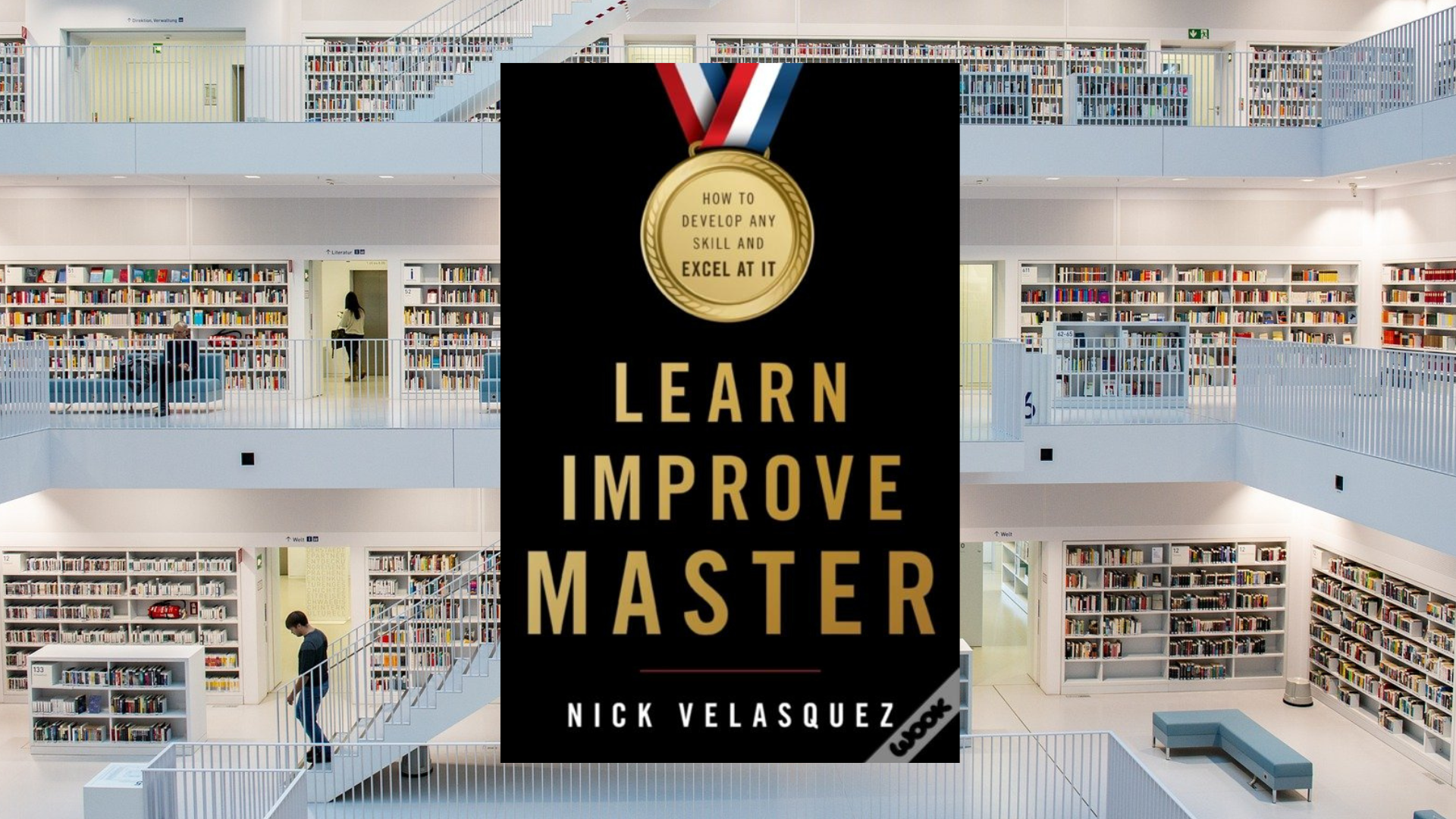
Learn, Improve, Master, by Nick Velasquez:
“Learning is the greatest power of the human mind. Everything we've built, everything we've created, everything we've become has been the result of our ability to learn. And this great power is inherent in all of us. We are made to learn."
-Nick Velasquez
The athletic, artistic, and intellectual achievements of the great masters have always seemed so...magical. So...unattainable. Beyond anything we could ever hope to replicate. Until now.
In Learn, Improve, Master, Nick Velasquez pulls back the curtain on skill acquisition and mastery and shows that high proficiency and expertise isn't something reserved for a chosen few, but something that's attainable for all of us.
Attainable, that is, if we follow the proven principles of practice and learning as laid out in this book. Attainable does not, of course, mean easy. In choosing to become more than "just okay" at something, we are choosing to commit to a level of discipline and focus uncommon in the eyes of many.
If you've ever seen someone excel at the highest level of athletics; if you've ever seen someone perfectly execute a spectacular dance move, put together a phenomenal meal, or spellbound an audience with a stirring speech and wanted to do that too, this book will work with you to make that a reality.
In the book, you'll learn how to:
- Use your memory like top memory champions and remember anything you want
- Optimize practice like elite musicians, chess players, and athletes
- Build training habits that stick
- Overcome obstacles, setbacks, and plateaus
- Choose mentors and coaches that will help you develop your potential
- Accelerate learning and become a master of your craft
Keep this book by your side as you attempt to learn any new skill or craft and you'll be able to progress so much further and faster than you'd ever be able to on your own. That's partly because what other people have done, you can learn to do.
You can also shorten your learning curve by reading about the mistakes others have made and what they've figured out on their own, without having to go through this painful process all by yourself.
Now, bear in mind, mastery is still going to be a painful process that you'll have to go through. Nobody gets to skip that on their way to greatness.
But by learning the foundational concepts that we're going to cover in this breakdown, and by absorbing the wisdom of people like Leonardo da Vinci, Usain Bolt, Ernest Hemingway, Michael Jordan, Garry Kasparov, Simone Biles, Stephen King, Michael Phelps, Martha Graham, Tiger Woods, Jiro Ono, Serena Williams, and many more, you're going to put yourself in a much better position to win. Simply put, you'll be stacking the probabilities of success in your favor.
The endlessly fascinating part of all this, though, is that you can never, ever know where you'll end up unless you set out on the path in the first place. As Friedrich Nietzsche said:
“There exists in the world a single path along which no one can go except you: whither does it lead? Do not ask, go along it."
Sample Quotes from the Book:
“Attributing Mozart’s mastery to innate abilities is a disrespect to the lifetime of dedication he put into his craft."
“One of the best ways to understand something is by taking it apart and examining how its pieces fit together.”
“It’s hard to know which parts of your technique can be improved if you’re doing everything at once.”
Read the Full Breakdown: Learn, Improve, Master, by Nick Velasquez
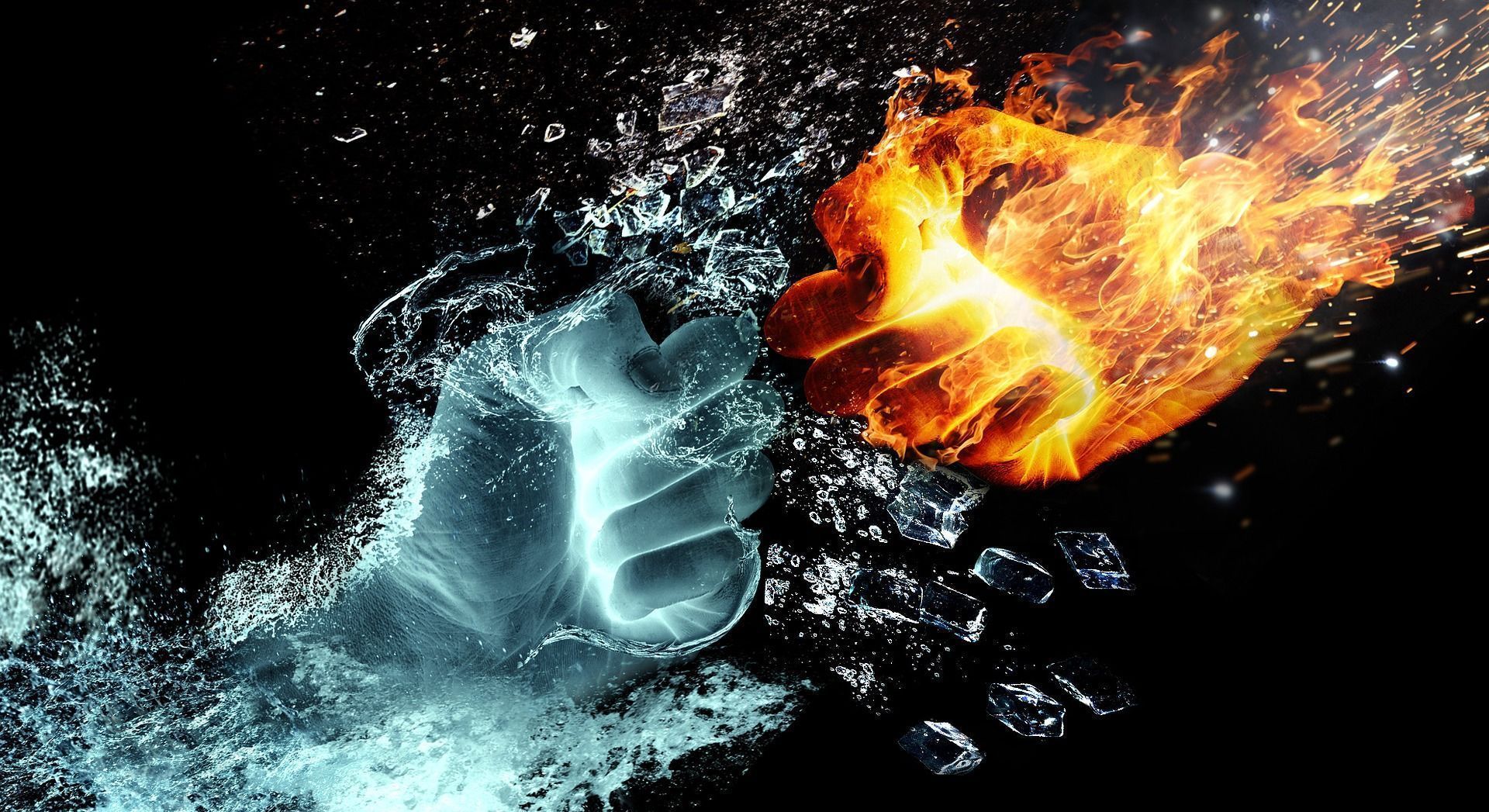
The View from the Opposition:
No one's ideas are beyond questioning. In this section, I argue the case for the opposition and raise some points you might wish to evaluate for yourself while reading this book.
#1: Creativity by Numbers
There's something...a little bit "off" about following someone else's advice about how to be creative, but to Rubin's credit, he does say extremely early on that you can take what you find useful from his book and discard the rest. So this isn't exactly a "criticism" of the book, only something that should be pointed out at least somewhere in this breakdown.
Truly, one of the best outcomes you can hope for after reading this book isn't that you "learn how to be creative," it's that you actually get out there and make stuff. That you actually become an artist. And the only way you can really do that is by releasing your art into the world.
#2: Exactly What You Needed
There's a lot of "obvious" advice in this book, and almost literally all of it is from other people - but again, this is not a criticism, just an observation. There's everything in here from management theory, art history, Buddhism, self-help, and more.
If you've read a lot of books and lived a lot of years, many of these insights may not be new to you, but to someone just discovering them for the first time, they may in fact be revelatory. And even so-called "obvious" insights need to be refreshed and revisited from time to time or else we lose our hold on them and they become as useful to us as though we had never learned them at all.
"The test of a first-rate intelligence is the ability to hold two opposed ideas in the mind at the same time and still retain the ability to function.”
-F. Scott Fitzgerald

Questions to Stimulate Your Thinking:
The quality of your questions determines the quality of your life. That's also how you get the absolute most out of any book that you decide to read:
You ask great questions the whole time - as though the book was on trial for its life.
Here in this section are a few questions that can help guide and stimulate your thinking, but try to come up with your own additional questions, especially if you decide to read this book the whole way through...
#1: "What would happen if you gave every moment of your life the same quality of attention you'd bring to landing a plane?"
#2: "Have you ever experienced two gusts of wind that were exactly the same in every way?"
#3: "What do you or most people normally find boring, but that could be interesting if looked at in a different way? Can you notice what others don't even see?"
#4: "How can you see your present work with fresh eyes? Can you make the loud parts soft and the soft parts loud? Could you use a different material? Could you turn it around 37 degrees to the left? How can you view your artistic creation again as though you're seeing it for the very first time?"
#5: "How can you shock and divide your intended audience? How can you move them in a way that they will be forced to feel something when they see or hear your work? How intense can you make their reaction to it?
#6: “If the work doesn’t represent who you are and what you're living, how can it hold an energetic charge?"
#7: "How can you build a sustainable ritual, a manageable schedule, in order to avoid burnout and achieve longevity? What kind of changes can you make to your day that will help you to keep making art for the rest of your life?"
#8: "How can your present work be better? How many times can you ask this question and keep coming up with new answers?"
#9: "Have you ever given your absolute best to something that was important to you? How did that feel, relative to those times when you've done less than your best? Can you commit to bringing your absolute best to each and every new creation from this moment onward?
#10: "How can you enter into that beautiful state which makes art inevitable?"
"Judge a man by his questions, rather than by his answers."
-Voltaire

Action Steps:
So you've finished reading. What do you do now?
Reading for pleasure is great, and I wholeheartedly support it. However, I am intensely practical when I'm reading for a particular purpose. I want a result. I want to take what I've learned and apply it to my one and only life to make it better!
Because that's really what the Great Books all say. They all say: "You must change your life!" So here, below, are some suggestions for how you can apply the wisdom found in this breakdown to improve your actual life.
Please commit to taking massive action on this immediately! Acting on what you've learned here today will also help you solidify it in your long-term memory. So there's a double benefit! Let's begin...
#1: Try 100 Things That Don't Work
In order to have just one good idea, it's often necessary to come up with a hundred bad ideas. Famously, it took Thomas Edison more than 1,000 iterations to finally come up with a design for a lightbulb that would actually work, but what he said was that he hadn't failed, he had simply found 1,000 ways it wouldn't work.
In the experimentation phase of any creative project, it's important not to judge your ideas as being either good or bad, but rather to collect as many of them as you can, observe how they smash into each other, and see what results.
You can gather inputs from everywhere: overheard conversations, different genres of music than the ones you normally listen to, and alternate routes to work other than the one you usually take. Read a book by an author you've never heard of. Walk out your front door with no plan in mind other than walking (but make sure you stop halfway and come back!)
Notice what others don't see, and try to make art out of what you find. Try 100 different variations, and make peace with the fact that 99 of them may yield nothing and that the 100th might be exactly what you were heading towards the entire time.
#2: Build Sustainable Rituals
“Complete as many elements of the project as you can without getting hung up. It's much easier to circle back once the workload is reduced. Often the knowledge we gain from finishing the other pieces becomes a key to overcoming earlier obstacles."
Burnout is very real, and to achieve longevity as an artist (and sanity as a human), you need to do whatever you can to mitigate its risks.
This involves managing your daily schedule in a way that you can sustain for a long period of time, and that's set up to allow you to create the kind of art that you want to make. Throw out everything that doesn't support this.
A big part of this has to do with reducing overwhelm, which is something I've come up with several strategies to cope with as well. For example, when writing these book breakdowns, I don't intimidate myself with thoughts of releasing "an absolutely perfect breakdown that's going to surprise, delight, and educate thousands of people," but rather I split it up into sections and set the intention of doing my absolute best with each one.
First, I'll conduct my research and gather all my notes from the book, then I'll copy out all my notes and see which Key Ideas emerge. Sometimes they're different than the Key Ideas that the author has come up with, and sometimes the author hasn't clearly identified their Key Ideas in the first place, so I have to get in there and pull them out.
After that, I'll organize all the Key Ideas into something approximating order, usually leading one to the next in some sort of thematic sequence. Then I'll do some free association to get all my thoughts, references, and conclusions about those Key Ideas onto the page and organize them into a basic structure.
Then I'll write a first draft. Then a second one. Then I'll go through each section and do pretty much the same thing. Then I'll revise and edit the whole thing until I believe that it represents both my best work and the original insights and ideas of the author.
If you're wondering: yes, it's a lot of work! But I break it down into manageable sections, and I'll attack each one individually. That way, I'm dealing with 10+ separate, deal-with-able pieces, and not an entire "10,000-word book breakdown." 12,000 in the present case!
You can do something similar, whatever your medium. Break your craft down into the smallest constituent parts, and then approach each one individually, giving it your absolute best effort. With the intention of doing great work. And then, importantly, you leave the results and the reception of that work to take care of themselves.
#3: Put Everything Into One Thing
You'll never know how good you can be unless you give every single thing you have within you in order to be the best possible version of yourself, whether that's as an artist, an athlete, or a person.
If you haven't done that, then you simply do not know.
So don't say that you can't write, because you've never put your entire being into writing your book!
Don't say that you can't paint, because you've never poured your very soul into any of your paintings!
Don't say that you can't act, because you've never even tried! Not fully.
Give it everything you have. Put forth your total effort to become as great as you want to be. There is no other way to find out how great you can be.
#4: Ship
Artists ship. They release their work, and you have to actually release what you've made if you want to be an artist. For better or for worse. For fame and widespread recognition or silence and apathy. Whatever the reaction or reception.
Get in the habit of finishing, even if what you've made isn't perfect. Once you ship once, it becomes easier to do it again, and it really is a habit just like anything else.
If it makes you feel any better, you should see some of the oldest breakdowns here at the Stairway to Wisdom!
At the time of writing, I'm working on updating/improving them, but they are...not perfect. Not by a long shot. But they've gotten better over time as I've released each new one, and I had to ship those earlier ones if you were eventually going to read this one.
#5: Follow Your Excitement
“Don’t ask yourself what the world needs. Ask yourself what makes you come alive, and go do that. Because what the world needs is people who have come alive.”
-Howard Thurmon
"Follow your passion" is generally horrible business advice, but when it comes to making art, it's indispensable. You simply must follow your excitement, or else why are you even doing this in the first place?!
Now, you may be asking, "But aren't there already millions of books out there? Do we really need another one? Hasn't everything important already been said?"
The simple answer to this question is that yes, we do need another book - and another movie, another painting, another photograph, another YouTube video. For the very simple reason that we don't have yours yet.
"The path to success is to take massive, determined action."
-Tony Robbins
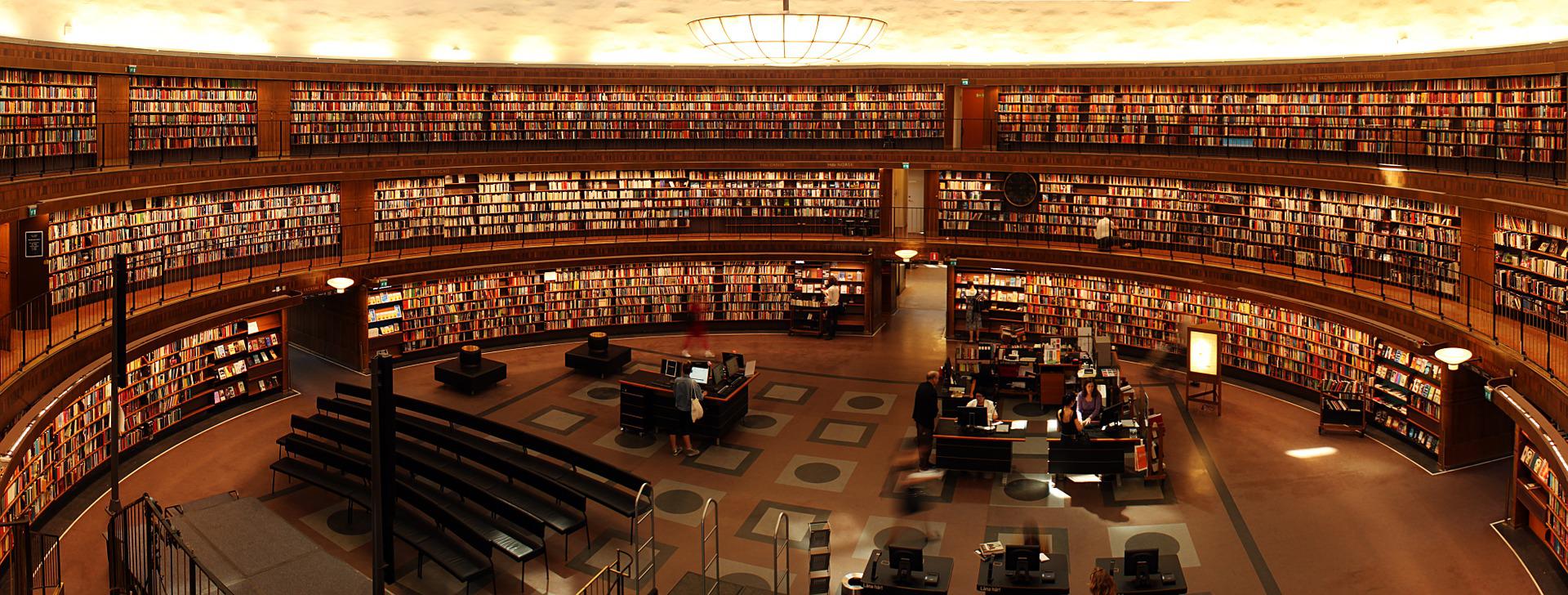
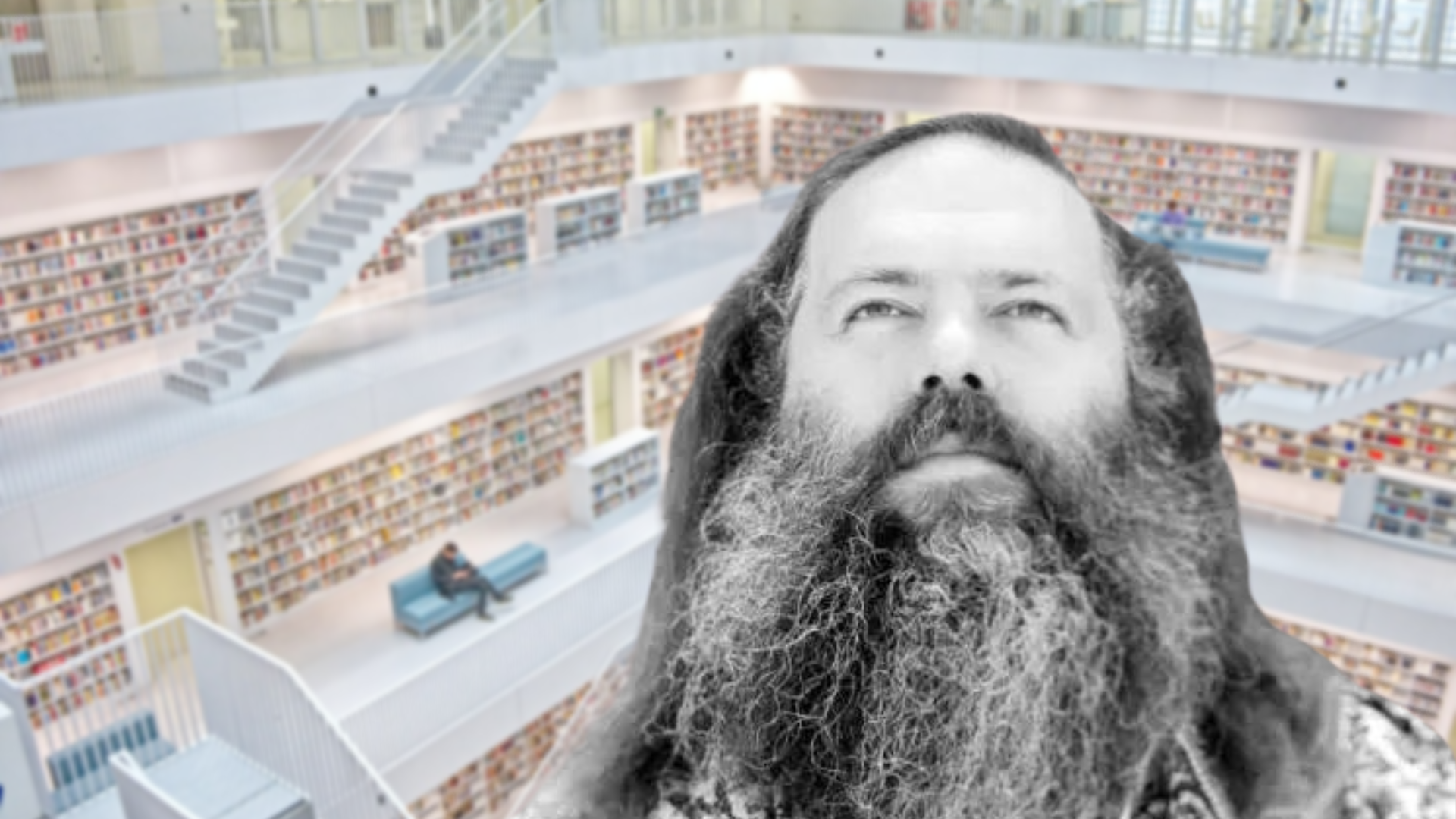
About the Author:
Rick Rubin is a nine-time Grammy-winning producer, named one of the 100 most influential people in the world by Time and the most successful producer in any genre by Rolling Stone. He has collaborated with artists from Tom Petty to Adele, Johnny Cash to the Red Hot Chili Peppers, Beastie Boys to Slayer, Kanye West to the Strokes, and System of a Down to Jay-Z.
Additional Resources:
Biography of Rick Rubin | Wikipedia
Rick Rubin: The 60 Minutes Interview | YouTube
Extremely Thoughtful Review of The Creative Act | Cam Williamson
This Book on Amazon:
The Creative Act, by Rick Rubin
If You Liked This Book:
Rick Rubin: In the Studio, by Jake Brown
Put Your Ass Where Your Heart Wants to Be, by Steven Pressfield
The Artist's Journey, by Steven Pressfield
Excellent Advice for Living, by Kevin Kelly
Hell Yeah or No: What's Worth Doing, by Derek Sivers
Learn, Improve, Master, by Nick Velasquez
The Pathless Path, by Paul Millerd
Awareness, by Anthony de Mello
The Artist's Way, by Julia Cameron
The Creative Habit, by Twyla Tharp
